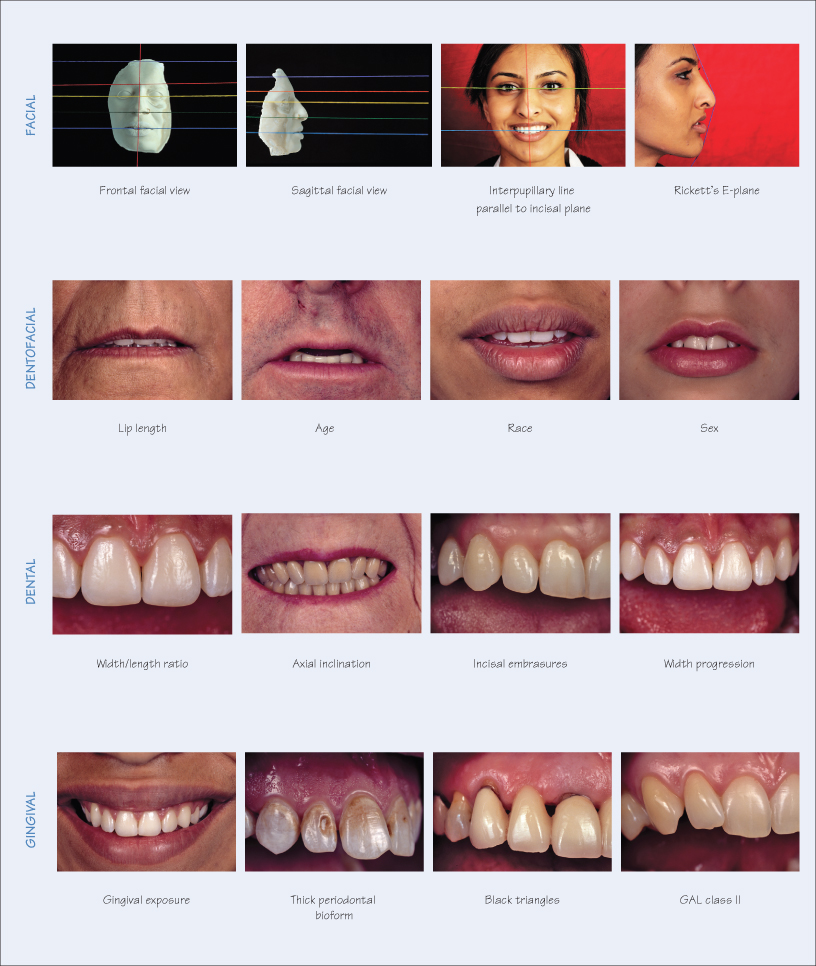23
Anterior Dental Aesthetics: Basic Principles

Anterior dental aesthetics is primarily concerned with the appearance of the maxillary anterior six teeth. The majority of research has been directed towards the size, shape and alignment of the maxillary incisors and canines, their relationship to each other and the antagonist dentition, and to the surrounding soft tissues including the gingivae, lips and facial features. Dental aesthetics is best analysed by considering the face and then zooming closer to the dental elements.
Facial Perspective
The facial perceptive can be divided into frontal and sagittal views. From the frontal view, the key features are:
- Imaginary horizontal parallel lines acting as cohesive forces for facial symmetry;
- Facial midline, perpendicular to horizontal lines, acting as segregative force to add interest to the facial composition;
- The interpupillary line is used as a reference for assessing the inclination of the incisal plane.
From the sagittal (profile) view, the analysis consists of:
- Imaginary horizontal parallel lines;
- Frankfurt horizontal plane;
- Ricketts’ E-plane;
- Steiner and Burstone lines;
- Naso-labial angle.
Dentofacial Perspective
Zooming closer, the dentofacial composition concentrates on the teeth and their relationship to the surrounding soft tissues in static and dynamic muscular positions.
The static position is a habitual (not relaxed) state, the lips are slightly parted with minimal muscular activity and the teeth are out of occlusion. The degree of tooth exposure is determined by the LARS factor:
- Lip length (maxillary) – varies from 10 to 36&n/>
Stay updated, free dental videos. Join our Telegram channel

VIDEdental - Online dental courses


